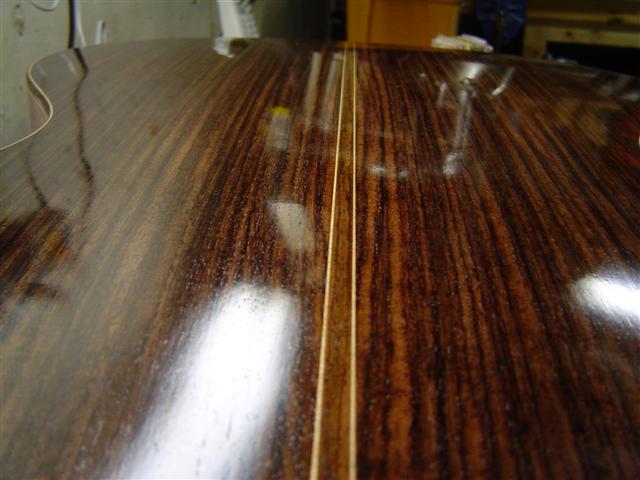Ok, I have about 9 sessions of FP on my practice top, I think it is quite nice at this point. Heck almost, but not quite, nice enough. It has been four days sinced I glazed it and time for the buffer.
So I started buffing with a 8" buffer at 1725 rpm using, tripoli bar that came with the buffer and noticed a few of these.

I hope you can see them well, I zoomed in as much as i could.
I think the shellac melted and piled up in ridges. But if so why.
Was it too soon? Did I apply too much pressure, I thought i was not heavy handed? Is the tripoli compound to aggressive? All of the above ??
I tried another wheel with "white diamond" compound and did get a nice luster without any of the shellac melt sandwiches, but I also moved faster and went lighter pressure. I was scared.

Good thing I can sand it off and try again,, but would like to get it at least closer to right next time.
One more question,, is 1 glazing session correct or should there be more.
Thanks,,,, Mike
 . This is practice, might as well make as many mistakes as possible and learn what not to do,, and how to recover if you make one..I'm sure with a little sanding and another couple sessions it will be at least back to where it was before the buff monster hit, but then I'd like to know how to proceed.
. This is practice, might as well make as many mistakes as possible and learn what not to do,, and how to recover if you make one..I'm sure with a little sanding and another couple sessions it will be at least back to where it was before the buff monster hit, but then I'd like to know how to proceed.
 Thanks for all the help.
Thanks for all the help.


